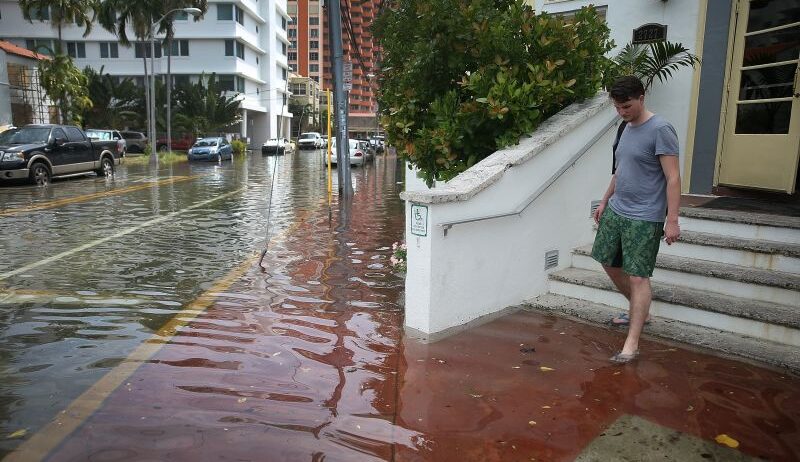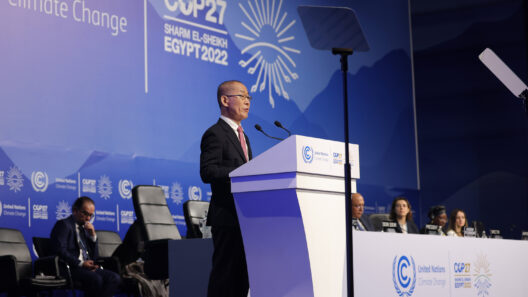Have you ever pondered whether the tides of change in our oceans are merely the ebb and flow of nature, or if they signify a more ominous reality stemming from global warming? The question of whether sea levels have risen due to climate change challenges us to confront the intricate relationship between our actions and the environment. As we delve into this critical topic, it becomes increasingly evident that the evidence is both compelling and urgent.
To comprehend the rise in sea levels, one must first grasp the fundamental principles of climate change. Global warming, fueled by the accumulation of greenhouse gases like carbon dioxide and methane, engenders a cascade of climatic consequences. As the Earth warms, polar ice caps and glaciers, which contain vast quantities of freshwater, begin to melt. This melting contributes to an increase in sea levels. Furthermore, as seawater warms, it expands—a phenomenon known as thermal expansion. Together, these processes significantly elevate the risk of inundation for coastal regions.
In recent decades, observations have shown that global sea levels have risen alarmingly. According to satellite data, the average global sea level has increased by approximately 3.3 millimeters per year since the early 1990s. This rate of rise is unprecedented in recorded history and poses a formidable challenge to coastal ecosystems and human settlements alike. The question looms: what lies at the heart of this rise? Is it simply natural variability, or is human-induced climate change the impetus?
The evidence firmly points to human activity as a primary catalyst. Scientific studies indicate that the planet has experienced about 1°C of warming since the late 19th century, predominantly due to anthropogenic forces. In particular, the combustion of fossil fuels and deforestation have exacerbated the greenhouse effect, leading to accelerated melting of ice sheets in Greenland and Antarctica. Observations confirm that these regions have shed more than 6 trillion tons of ice since the 1970s, a staggering quantity with direct implications for global sea levels.
But why should this matter to you? The rising tide is more than an abstract statistic; it represents an existential threat to communities, economies, and ecosystems. As sea levels inch higher, low-lying areas—often densely populated—find themselves increasingly vulnerable. Cities like Miami, New Orleans, and Jakarta are not just facing potential flooding; the essence of their existence is imperiled. This scenario invites the playful contemplation: Do you really think these vibrant locales can withstand nature’s relentless assault?
Moreover, the socio-economic repercussions are profound. Coastal erosion, exacerbated by rising seas, threatens valuable infrastructure and displaces populations. In the United States alone, millions may be uprooted due to rising waterfronts. Adaptation strategies, ranging from seawalls to managed retreat, demand substantial financial investment and, importantly, political will. Yet, these measures may not suffice if the trajectory of climate change continues unchecked. How prepared are we, as a global society, to address such unprecedented challenges?
As communities wrestle with the reality of rising sea levels, the ecological impacts become apparent as well. Aquatic ecosystems face disruption from salinity intrusion into freshwater resources, which jeopardizes agriculture and drinking water supplies. Moreover, ecosystems like mangroves and wetlands—nature’s natural barriers—are threatened, leading to the loss of biodiversity and increased vulnerability to storms. With this knowledge, one must ask: Is the delicate balance of our planet truly worth the anthropogenic risks we impose on it?
Alongside these stark realities, hope resides in commitment and action. Governments worldwide are beginning to acknowledge the severity of climate change and are formulating policies to mitigate its scourge. The Paris Agreement stands as a testament to global cooperation aimed at limiting temperature rises to 1.5°C. While the path forward is fraught with challenges, it is not insurmountable. The collective movement toward renewable energy, reforestation, and sustainable agricultural practices embodies a response that can curtail the very emissions driving sea level rise.
Yet, the responsibility does not lie solely within governmental corridors; individual and community actions are equally pivotal. Awareness campaigns, lifestyle changes, and advocacy for policies promoting sustainability can catalyze a ripple effect. When citizens demand accountability and resilience from their leaders, we inch closer to safeguarding our shores. In actively engaging in this cause, you become part of a burgeoning movement—a unifying force for change.
The question remains: Have sea levels risen due to global warming? Indubitably, the evidence supports this claim. But it also posits a challenge: Will we, as stewards of the Earth, act decisively to curb the trajectory of climate change, or will we languish in inaction, witnessing the slow encroachment of the tides upon our homes? The choices before us echo through time; the responsibility to rise to the occasion is ours alone. It is crucial to recognize that the fight against climate change is not solely a scientific discourse but a moral imperative that demands immediate and concerted efforts.
As stewards of our planet, embracing the challenge of rising sea levels and climate change is essential. We must navigate this complex and compelling issue with urgency, intelligence, and unwavering commitment. Only through unified action can we hope to alter the course of this inexorable tide.







